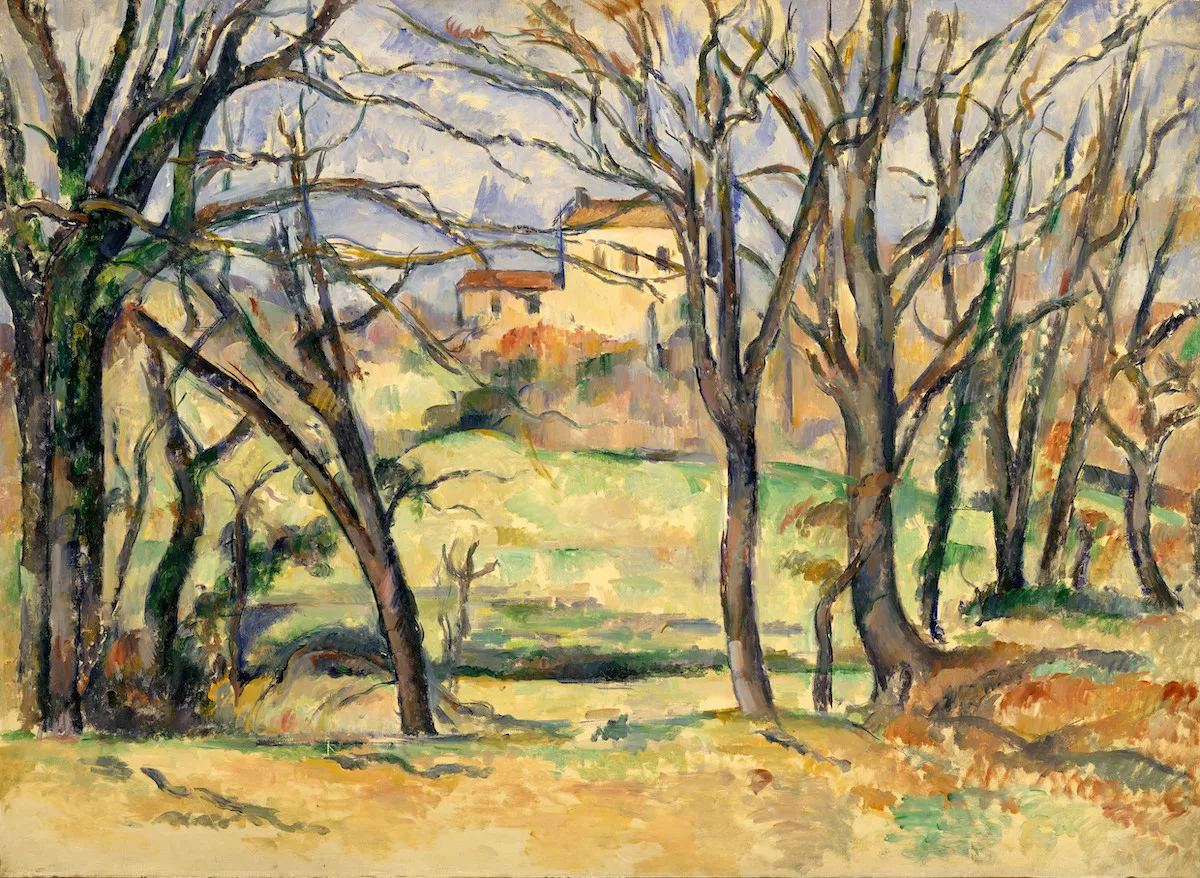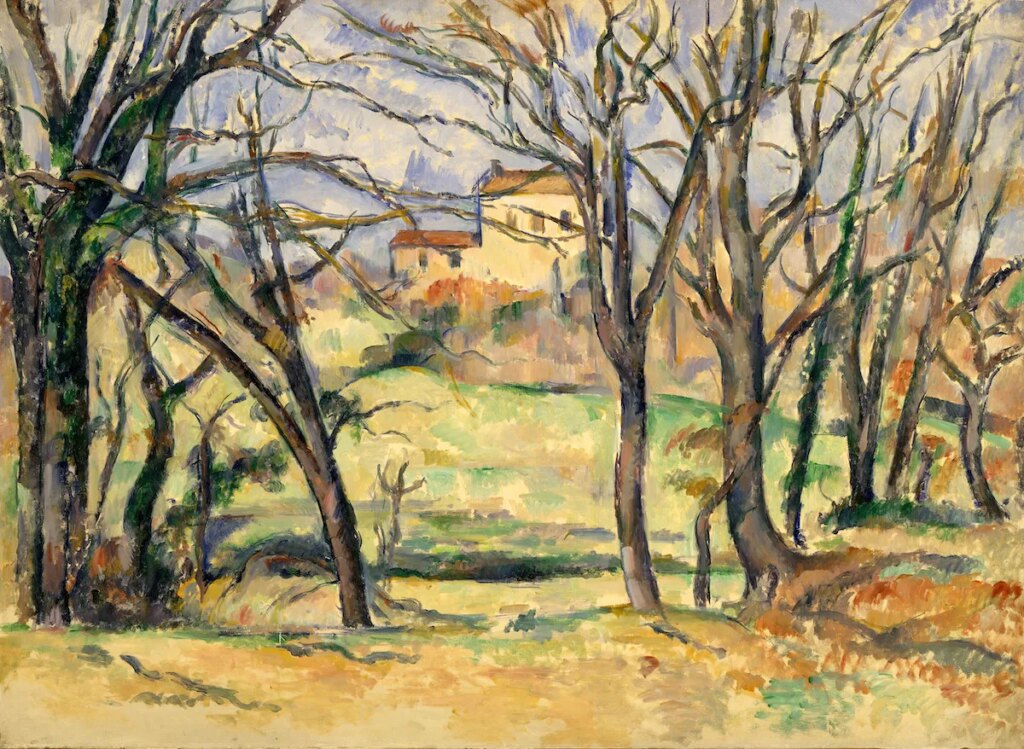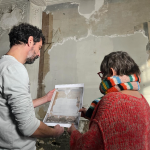
To receive Morning Links in your inbox every weekday, sign up for our Breakfast with ARTnews newsletter.
The Headlines
FRANKENTHALER LEGAL SAGA. The Helen Frankenthaler Foundation has filed motions to dismiss legal accusations by its former board president and the nephew of the artist, Frederick Iseman. The motions filed Tuesday come following allegations by Iseman of “pay to pay” schemes and attempts by the board’s current directors, Lise Motherwell, Clifford Ross, and Michael Hecht, to exploit the foundation for their benefit, threatening to ruin Frankenthaler’s legacy, reports Daniel Cassady for ARTnews.
HIDDEN CÉZANNE UNCOVERED. Fragments of a previously unknown Paul Cézanne mural hidden in his childhood home were discovered during an ongoing, ambitious renovation of Bastide du Jas de Bouffan, the artist’s family home in Aix-en-Provence, France. The remaining parts of the mural were found in August under wallpaper and plaster in a large living room, and depict a landscape with architectural elements. “The discovery of this portion of a monumental landscape invites us to re-evaluate the way in which Cézanne saw himself as an artist,” said Denis Coutagne, president of the Paul Cézanne Society, speaking to Le Quotidien de l’Art.
The Digest
The Etches Collection, a museum in Kimmeridge, UK, is appealing to the public to help raise funds needed to excavate the fossil remains of a massive prehistoric sea creature before they get washed away in a rapidly eroding cliff. The well-preserved skull of the 150-million-year-old, 39-foot-long pliosaur was discovered in 2022, and the remainder is encrusted in a cliff above a beach in Dorset. [BBC]
The Metropolitan Museum of Art and London’s Victoria and Albert Museum (V&A) are facing off over the acquisition of a Romanesque ivory carving dating from 1190–1200. The Met bought the sculpture, Deposition from the Cross, from its owners for $2.5 million through a private Sotheby’s sale subject to it being exportable from the UK. However, an export license has been deferred a second time, so that the V&A can try raising the funds needed to buy the piece, which had been on loan to the institution from 1982 to 2022. [The Art Newspaper]
The Guangdong Times Museum will reopen in March with a group show organized by curator Qu Chang. The nonprofit private museum was forced to close in 2022, when its main financial backer, Times China, withdrew funding. [Artforum]
The French Resistance fighter Missak Manouchian, who was a Communist Party member and an Armenian immigrant to France, is being inducted into the Panthéon in Paris today, alongside his wife Mélinée Manouchian. He is the first foreign member of the Nazi Resistance to enter the Panthéon. An orphan of the Armenian genocide, he was executed by German soldiers along with 22 other foreign comrades, including Spaniards and Eastern European Jews. [France 24]
The UK’s Science Museum Group signed an agreement with Saudi Arabia’s ministry of culture to increase cooperation via a Museums Hub in Riyadh. The partnership expands on a Cultural Memorandum of Understanding signed by the UK’s Secretary of State for Digital, Culture, Media and Sport and the Kingdom of Saudi Arabia. [Press Release]
Two colonial-era paintings of the Cuzco School, stolen form a church in Peru, were returned to Peruvian authorities in New York last week. The paintings by unidentified artists were taken over a decade ago and trafficked to Manhattan. [The Art Newspaper]
Archaeologists have discovered that the Saxon town of Lundenwic extended further than was previously thought, with its urban center thriving beneath where London’s National Gallery now stands. The discovery was made during recent excavations of the Sainsbury Wing at the National Gallery, which revealed postholes, ditches, and other signs of urban life dating between 659 CE–774 CE. [Heritage Daily]
The UK’s tax authority, HMRC, has been cracking down on money laundering, issuing fines and closely checking the practices of art dealers following the UK’s Economic Crime and Corporate Transparency Act. However, smaller galleries argue that some of the rigorous demands by authorities are burdensome. [The Art Newspaper]
The Kicker
MONUMENTS WOMEN, TOO. The so-called Monuments Men, a group of Allied-army art experts who found and returned millions of Nazi-looted cultural objects, were not all men. Now, the 27 women in the Monuments, Fine Arts and Archives section are getting overdue recognition in a new, permanent exhibition and a newly translated memoir by Rose Valland, the French art worker who spied on Nazi thefts of mostly Jewish art collections. In November, the new Monuments Men and Women Gallery was added to the National WWII Museum in New Orleans, with attention paid to the story of Mary Regan Quessenberry , who investigated suspicious provenance and hunted down stolen art. “As our mission evolved and as our work developed, then it became really natural to focus more on the postwar efforts, and as a result on the women,” who were more involved with the section’s restitution efforts during that period, said Anna Bottinelli, president of the Monuments Men and Women Foundation, speaking to the Associated Press. The foundation also reportedly updated its name to include women.


